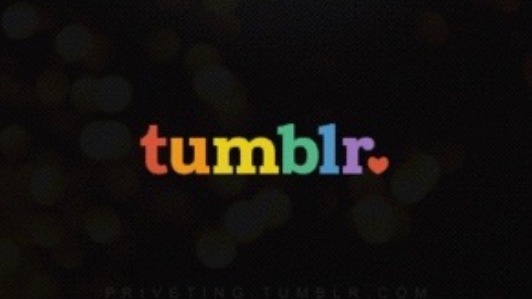What Draws The LGBTQIA+ Population To Tumblr?
In my last blog post I discussed a research project I was interested in undertaking which concerned the prevalence of the queer or LGBTQIA+ community in online spaces with a focus on Tumblr. Specifically, my research question is why queer identifying persons are drawn to such online social spaces such as Tumblr. In order to do this as an ethnographer I will need to use both primary and secondary sources in order to back up my hypotheses and gather a more informative and holistic viewpoint.
I can use the primary sources in order to address the more specific questions I have concerning Tumblr use that I can tailor to elicit the data that I need to help me with my study (Institute for Work & Health, 2015). In order to collect this data, I plan on conducting a survey with queer users of Tumblr through a recruitment post via Tumblr as well as my direct observations of the LGBTQIA+ community on the site.
As my study takes place in an online setting, there will be certain adjustments I will need to make on my research technique concerning approaching and interacting with research subjects. My subjects will be from an online environment I will need to adequately incorporate computer-mediated communication in order to accommodate the social change online spaces create (Garcia, Standlee, Bechkoff, and Cui, 2009, 53). Additionally, as an experienced user of Tumblr, I already possess the skillset in order to navigate the site expertly, communicate with users effectively, and use all functions of the site to my advantage when undertaking my research project (Garcia et al., 2009, 59-60). Also worthy of noting, there are ethical issues raised surrounding the blurred lines between public and private content and the confidentiality issues surrounding the access to that data. However, to combat this issue, I will only be using data collected from those of whom have consented as well as concealing identities as subject names are insignificant to the research I am trying to conduct. I may also have to alter my presentation of self through a creation of an additional Tumblr blog as I feel my personal blog would be inappropriate to use for such purpose (Garcia et al., 2009, 73). With these adjustments I hope to conduct both an ethical and informative study.
I will use this information gathered in conjunction with the secondary research I will be conducting as such sources will provide me with readily available, helpful and informative material that I can easily obtain to assist back up my findings (Institute for Work & Health, 2015). Looking at both quantitative and qualitative research that directly relates to the study I am conducting, the information gathered from sources such as There’s Something Queer About Tumblr (Byron and Robards, 2017) and Queer Lives: The Construction of Queer Self and Community on Tumblr (Zamanian, 2014), will provide me with a basis into answering my question of why queers are so drawn to Tumblr as a social networking site.
Hopefully through the combination of these methods I will be able to provide an answer my question, effectively studying the interactions and intentions behind the queer users of Tumblr.
References
Byron, P. and Robards, B. (2018). There’s something queer about Tumblr. [online] The Conversation. Available at: https://theconversation.com/theres-something-queer-about-tumblr-73520 [Accessed 28 Sep. 2018].
Garcia, A., Standlee, A., Bechkoff, J. and Cui, Y. (2009). Ethnographic Approaches to the Internet and Computer-Mediated Communication. Journal of Contemporary Ethnography, 38(1), pp.52-84.
Institute for Work & Health (2015). Primary data and secondary data [online] Available at: https://www.iwh.on.ca/what-researchers-mean-by/primary-data-and-secondary-data [Accessed 28 Sep. 2018].
Zimanian, P. (2014). Queer Lives: The Construction of Queer Self and Community on Tumblr. Postgraduate. Sarah Lawrence College.

